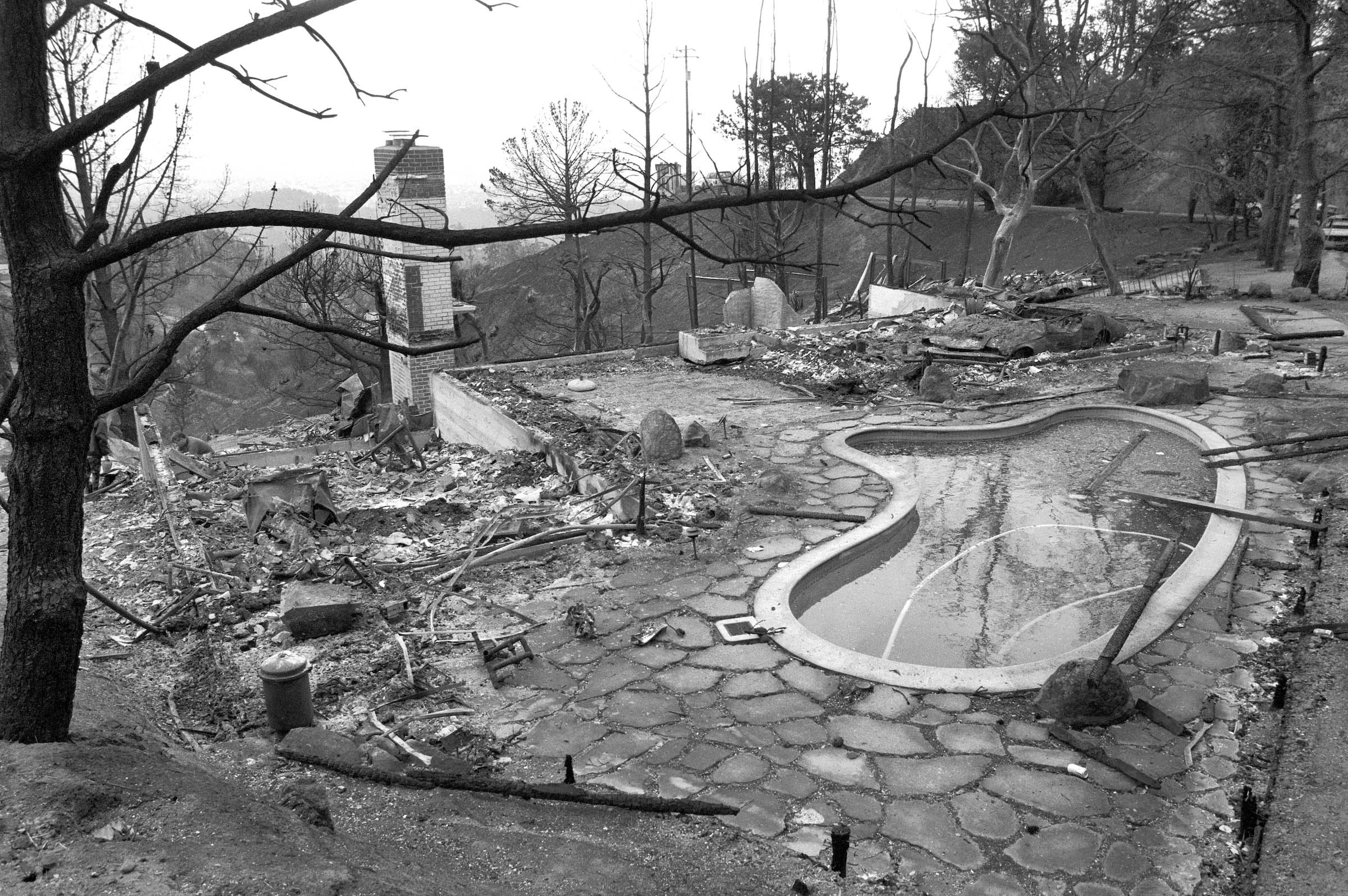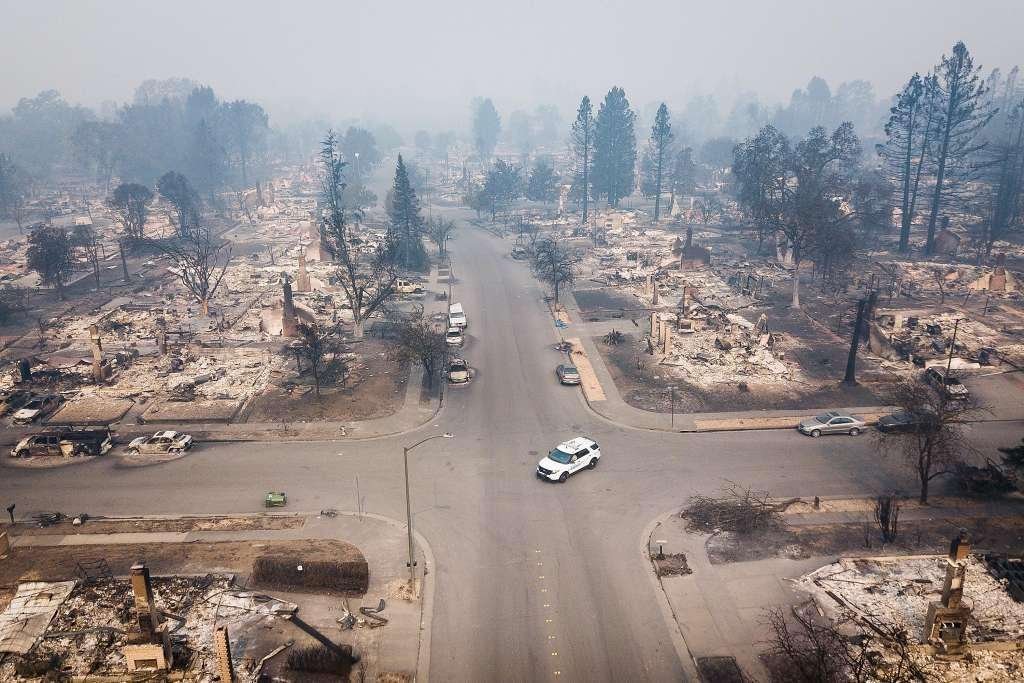The Top 5 deadly wildfires hotlist in California occurred in October and November. The temperature is frequently hot and dry throughout the year, making for ideal wildfire conditions. Lightning storms passing through the area downed power lines, and human activity typically starts wildfires in California (intentional and unintentional). They spread out due to the dry, brittle Diablo winds from the north and the Santa Ana winds from the south.
Table Of Contents
Deadliest Wildfire Hotlist in California
A growing number of people live in fire-prone locations. The likelihood of extreme weather events is rising due to climate change, raising concerns about Californian fires. Here is the Top 5 wildfire hotlist in California history:
1. Camp Fire (2018)
The CampFire, so named after its location, was a quick yet terrible fire. Concow was among the nearby settlements devastated by the fire, which moved closer to Paradise, California’s built-up area. With costs exceeding $16.5 billion, it was the most expensive natural disaster in the world in 2018. It was also the deadliest wildfire to strike the United States in the previous century, only surpassed by the Cloquet fire of 1918, which claimed the lives of nearly 450 people.
| Date: 8 – 25 November 2018
Location: Butte County, affecting Paradise, CA. Size: 153,336 acres Deaths: 85 Buildings Razed: 18,804 Cause: Faulty Powerlines |
2. Griffith Park (1933)
The reasons for the Griffith Park wildfire are unknown. Over 3,000 men were cutting bush and laying down trails for the Reconstruction Finance Corporation. To attend to the fire, employees put down what they were doing. However, none had any prior firefighting experience, which caused chaos. The employees tried to put out the fire with shovels without water. The large number of disorganized people attempting to put out the fire made it extremely difficult for qualified firefighters to tackle it even when they arrived. Tragic events finally occurred as winds shifted and destroyed the workers firing.
| Date: October 3, 1993
Location: Griffith Park Size: 47 acres Deaths: 29 Buildings Razed: 0 Cause: Unknown |
3. Tunnel Fire (1991)
The Oakland Firestorm, also known as the Tunnel Fire, is notable for its winds. A “firestorm,” which is a regular feature of Australia’s mega-fires like the Gospels Mountain (2019) and Black Saturday (2009), is a fire that creates its weather system. The scorching and dry Diablo winds from the Diablo Valley were the cause of the wildfire’s initial spread in Oakland. Then, a firestorm developed due to unpredictable atmospheric circumstances caused by cooler coastal air from the coast. One structure was being destroyed by this fire every 11 seconds at its height.
| Date: October 19 – 20, 1991
Location: Oakland Hills Size: 1,520 acres Deaths: 25 Buildings Razed: 2,842 houses plus 437 apartments Cause: Unknown. |
4. Tubbs Fire (2017)
The Tubbs fire destroyed a record 5,643 buildings. The majority of these were damaged homes in Santa Rosa. Unbelievably, during the terrible 2017 California fire season, this is one of the numerous simultaneous wildfire hotlists. Even though it took several days for the fire to be contained, most of its spread occurred on October 9.
| Date: October 8 – 31, 2017
Location: Napa, Sonoma, and Lake Counties Size: 36,807 acres Deaths: 22 Buildings Razed: 5,643 Cause: Electrical malfunction |
5. Laguna Fire (1970)
The Kitchen Creek or Boulder Oaks fire is the Laguna fire. It is the 12th largest fire in California’s recent history in terms of size (at the time, it was the 3rd largest). The Santa Ana winds fueled this fire. Unfortunately, these winds were so strong that all but one firefighting aircraft were forced to land, severely impeding operations to put out fires. There were 16 fatalities as a result of the 12-day fire.
| Date: September 22 to October 4, 1970
Location: San Diego Country Size: 175,425 acres Deaths: 16 Buildings Razed: 382 Cause: Fallen power lines |
Conclusion:
From the abovementioned wildfire hotlist, we can conclude that October and November in California see the highest number of fatal wildfires. Also, note that few of the most extensive fires in the California region have occurred in the last 20 to 30 years. However, today’s firefighters are less likely to succumb to fires due to improved public and firefighter safety precautions. Additionally, we are now much more aware of the dangers of flames that abruptly shift course due to changes in the wind.
Also, read Southern California wildfire fanned by hot, dry, and windy weather.


